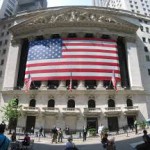
Publicly traded financial firms put out a lot of reports, and they’re long. But you don’t get to learn what really happens inside such companies until something’s gone wrong.
Yesterday, the bankruptcy trustee handling the liquidation of Jon Corzine’s MF Global released a 275-page paper on the broker-dealer-cum-investment-bank’s life and death.
The report points up that MF Global differed from New York’s other financial firms not so much in kind but in degree — but, of course, degree matters.
The report starts off with a simple description of MF Global’s financial motivation to engage in the behavior that caused its failure. Notes the trustee:
Historically, MF [Global] had generated revenue by earning interest on customer margin deposits, commissions on customer securities and future[s] transactions, proprietary trading activities, and interest revenues [from other activities].
What happened? Starting in 2007, as the trustee reminds everyone, the Federal Reserve started pushing interest rates way down, to zero by late 2008. MF Global earned $4 billion in interest on customer cash in 2007, but only $517 million in 2011 (it declared bankruptcy that October).
So MF Global needed another profit center — plus, it faced additional pressure after its much parent company had spun it off, leaving it to fend for itself.
“In the face of declining interest-rate revenues, MF Global’s proprietary investment strategy shifted from short-term, low-yield investments to longer-term high-yield and highly-leveraged investments.”
In other words, MF Global was desperate to take bigger risks to earn its profits. That’s why MF Global hired Jon Corzine. His experience as Goldman Sachs CEO told the world that he was good at this stuff.
Corzine, more or less, created a mess. He hired new people to do new things even as cost-cutting dictated that he a) get rid of some of the old people who knew what they were doing and b) confuse and demoralize the ones who remained.
“The Risk Department struggled to keep up with MF Global’s strategic changes,” the trustee mildly notes, as MF Global bet big that the sovereign debt of struggling European countries would rise in value.
MF Global’s pre-bankruptcy dilemma is the same one that every much larger financial firms faces — especially the ones that have old-fashioned commercial banks and thus have historically depended on some healthy interest income.
They’ve got to do something new, fast, to make their profits, and that something new inevitably involves risk and confusion.
Add to the confusion all kinds of new rules and regulations, both written and to-be-written, that consume bank employees’ time, and you’ve got the making of a new disaster.
Just think about JPMorgan Chase and its recent loss announcement.
Why on earth was JPMorgan Chase wildly betting its customers’ deposits on complex overseas derivatives commitments? Because it needed something to do to make money.
Of course, MF Global was just insanely negligent. As the trustee notes, it exposed a whopping 461 percent of its equity (buffer against losses) to the sovereign-debt bets that sent it under.
By contrast, JPMorgan exposed only 7.7 percent of its equity to such bets, and no other bank topped that ratio.
Yet it’s hard to take comfort that MF Global is an outlier here. Yes, we know that the other banks didn’t make this particular mistake — but what else are they doing?
MF Global also said before its bankruptcy that only two-tenths of its equity was “at risk” of loss. JPMorgan said, that one-tenths of its equity is at such risk, but this “value at risk” estimate turned out to be off in its own derivatives case.
The problem is that you don’t know what’s going to bring down a bank until after it does.
MF Global’s failure was not anyone’s fault but MF Global’s. But just as more murders occur on a hot summer weekend night than on a freezing weekday morning, even though it’s not the fault of the weather, more financial-firm disasters occur when interest rates are so low that you’ve almost got to do something stupid to make any money at all.



